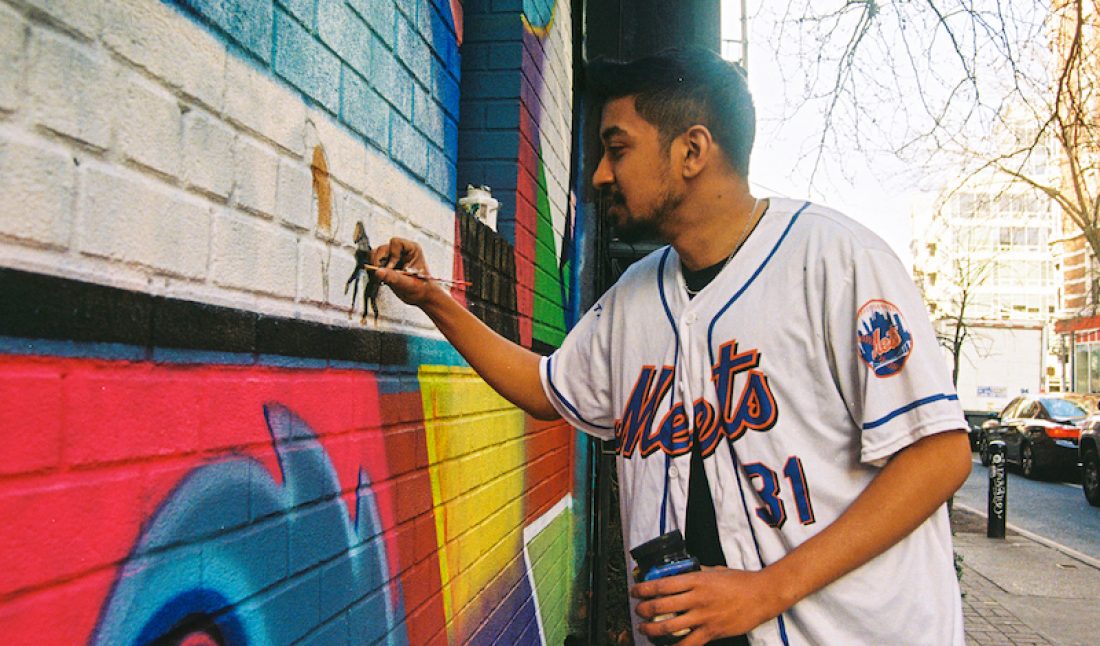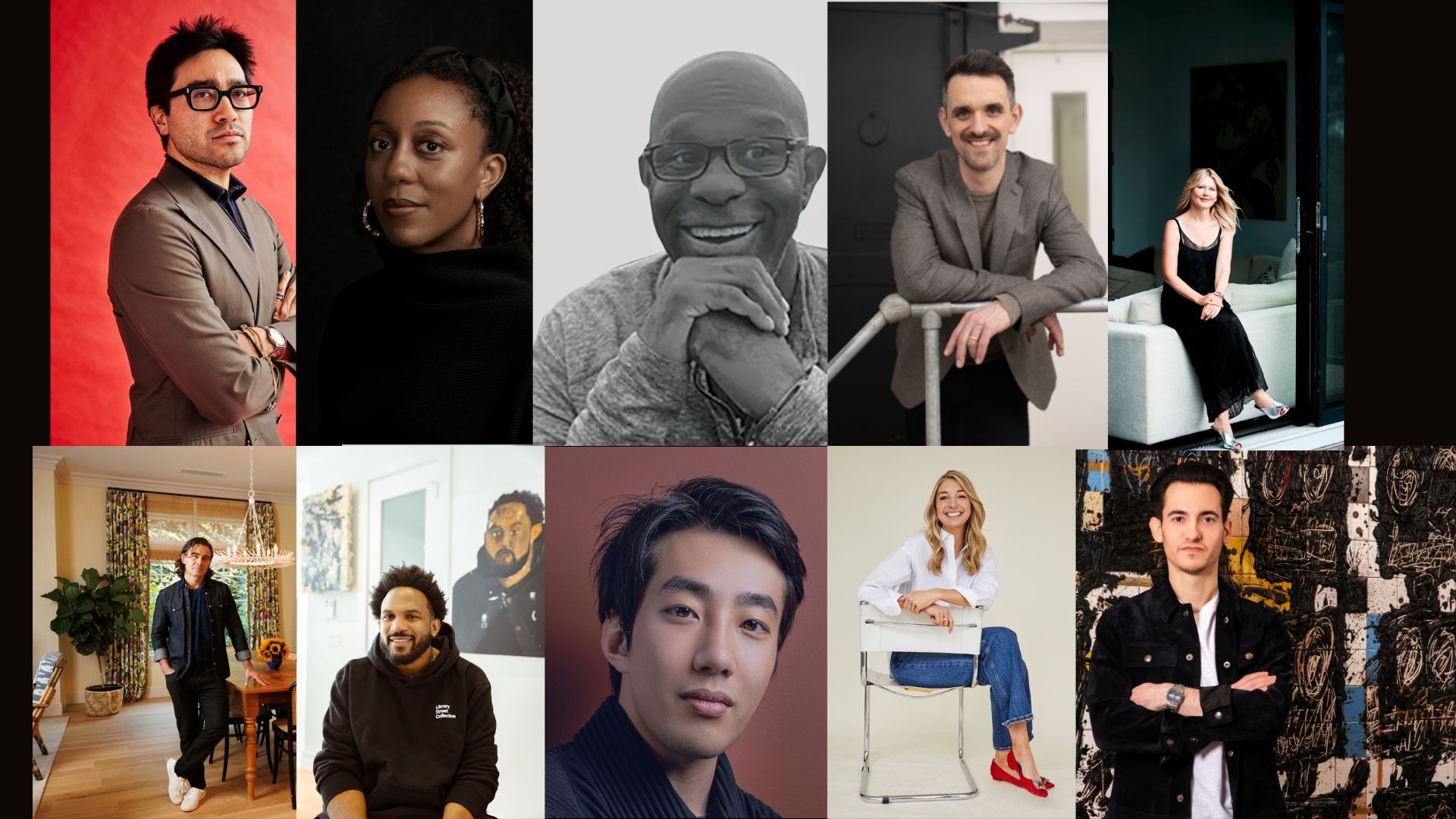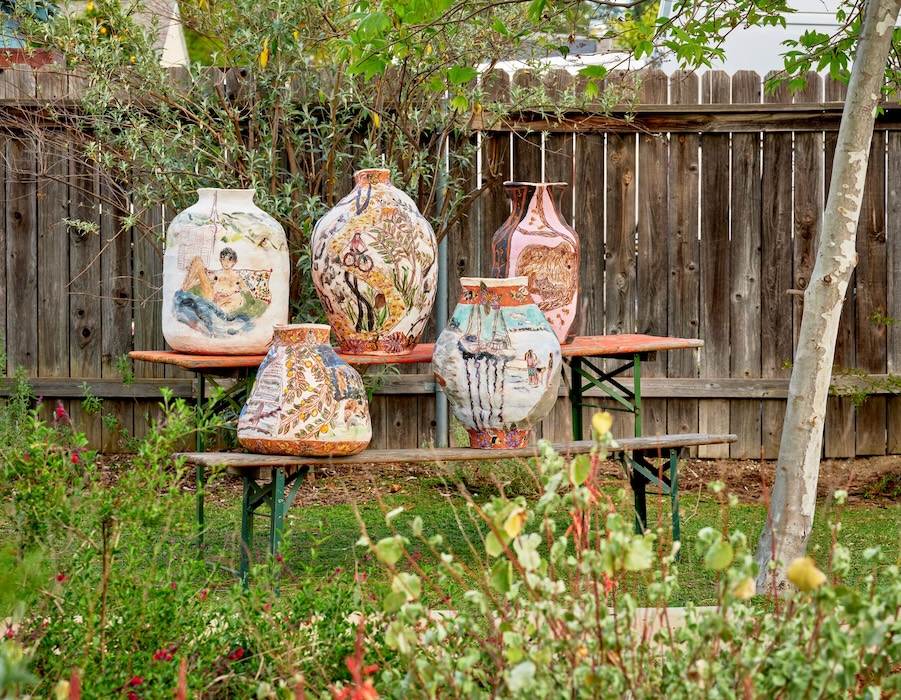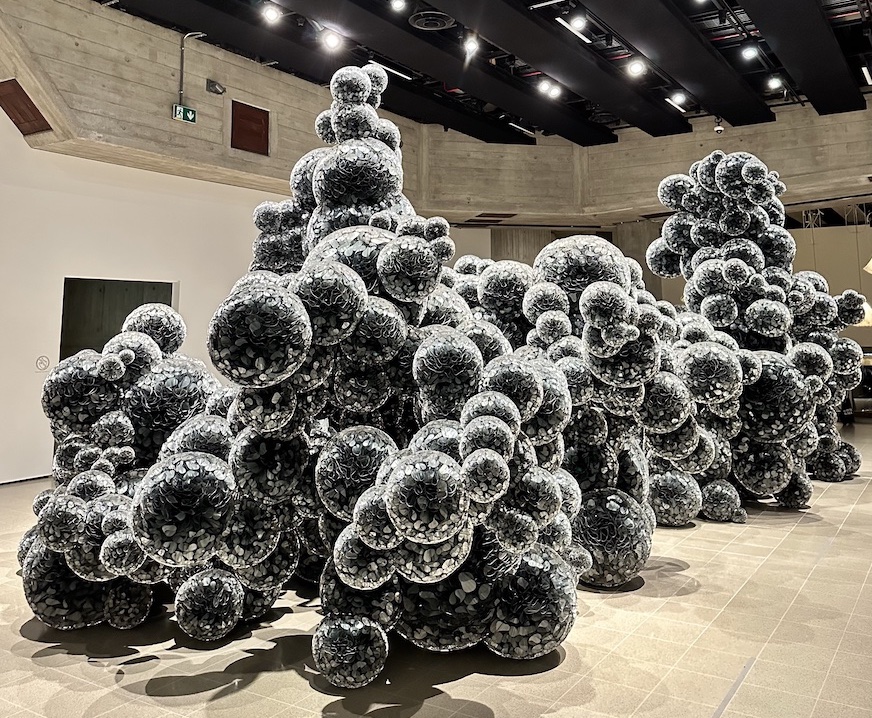For Zeehan Wazed, art—whether dance or graffiti—had always been an avenue of escape from his everyday worries. That was until recently, when he found himself more and more affected by the daily onslaught of triggering social and political news, usually delivered via his phone.
A story of gun violence, addiction, or immigration would go viral, get reposted fervently for a few days, and then our attention would move on to the next. Wazed realized he wanted to address that collective anxiety in his work, while shedding light on the fact that when we moved on to the next issue, the human suffering we decried just days ago, continued.
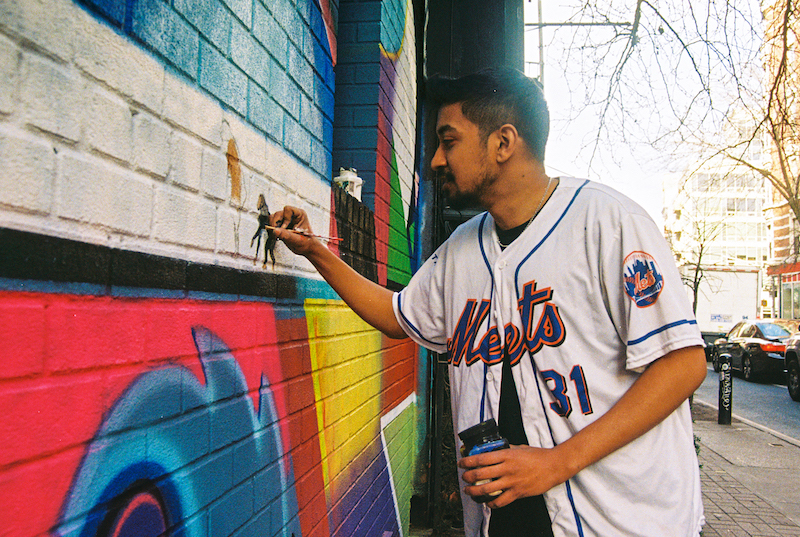 Photo by Jacob Consenstein, courtesy of the artist and ABXY.
Photo by Jacob Consenstein, courtesy of the artist and ABXY.
The resulting new paintings, which employ augmented reality, are on view in “Reality Show” at ABXY in New York through March 1. Whitewall spoke with the artist about harnessing group power to combat climate change, and a public mural on La Escuela Hispanica.
WHITEWALL: What was the starting point for “Reality Show”?
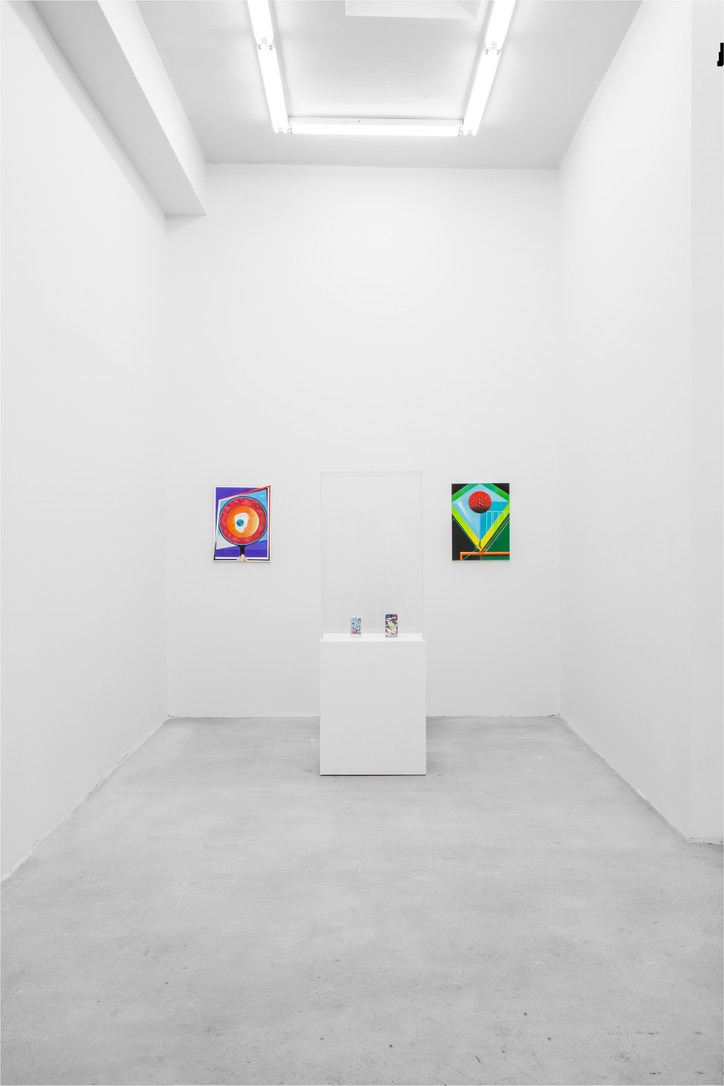 Photo by Erik Bardin, courtesy of the artist and ABXY.
Photo by Erik Bardin, courtesy of the artist and ABXY.
ZEEHAN WAZED: I saw this show at ABXY as an opportunity to draw attention to the issues that are important to me—certain situations that are often overlooked or have never been acknowledged in the form of fine art. The paintings in this body of work incorporate scenes from different news clips or images that went viral on social media. All of these images that once were trending, perhaps for a day or a week, quickly fade from our collective memory—but the realities they picture endure, and the people effected continue to suffer—sometimes for a lifetime. So, in many ways, this exhibition is a memorial to them.
WW: Why did you want to work with augmented reality in some of the paintings? What kind of viewer experience were you aiming for with AR?
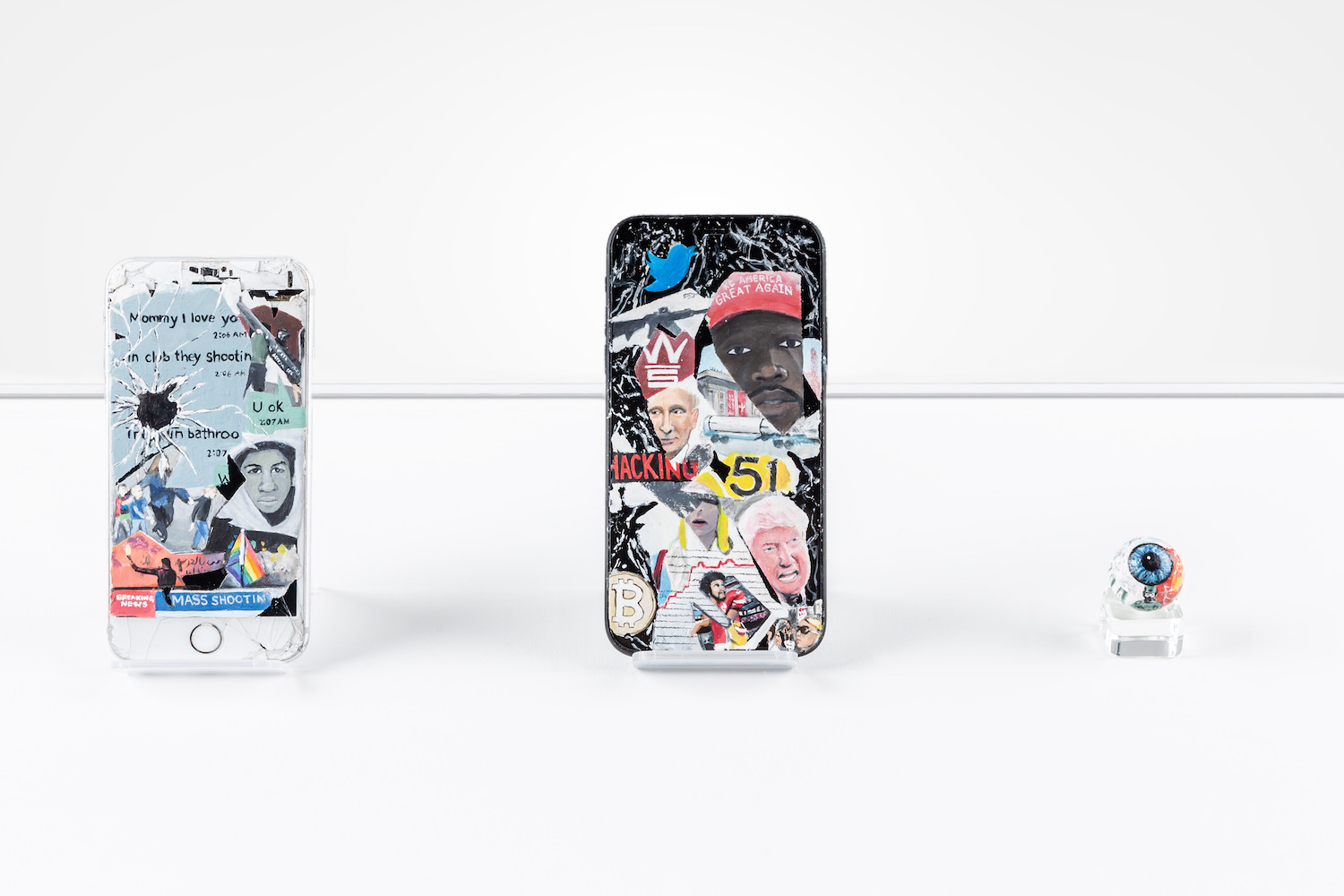 Photo by Erik Bardin, courtesy of the artist and ABXY.
Photo by Erik Bardin, courtesy of the artist and ABXY.
ZW: Painting in itself is a timeless art form, but there is so much more we can do to communicate what it feels like to be alive today with Augmented Reality.
I’ve been experimenting with AR paintings for about two years now, and have seen it applied in many different forms. In most of the applications I’ve seen so far, an artist will overlay a short animation onto a painting. But I’ve never seen an activation that incorporates a movie or short film with live actors. So, with the help of my friend Ambrose (Eng), that’s exactly what I did for my AR series.
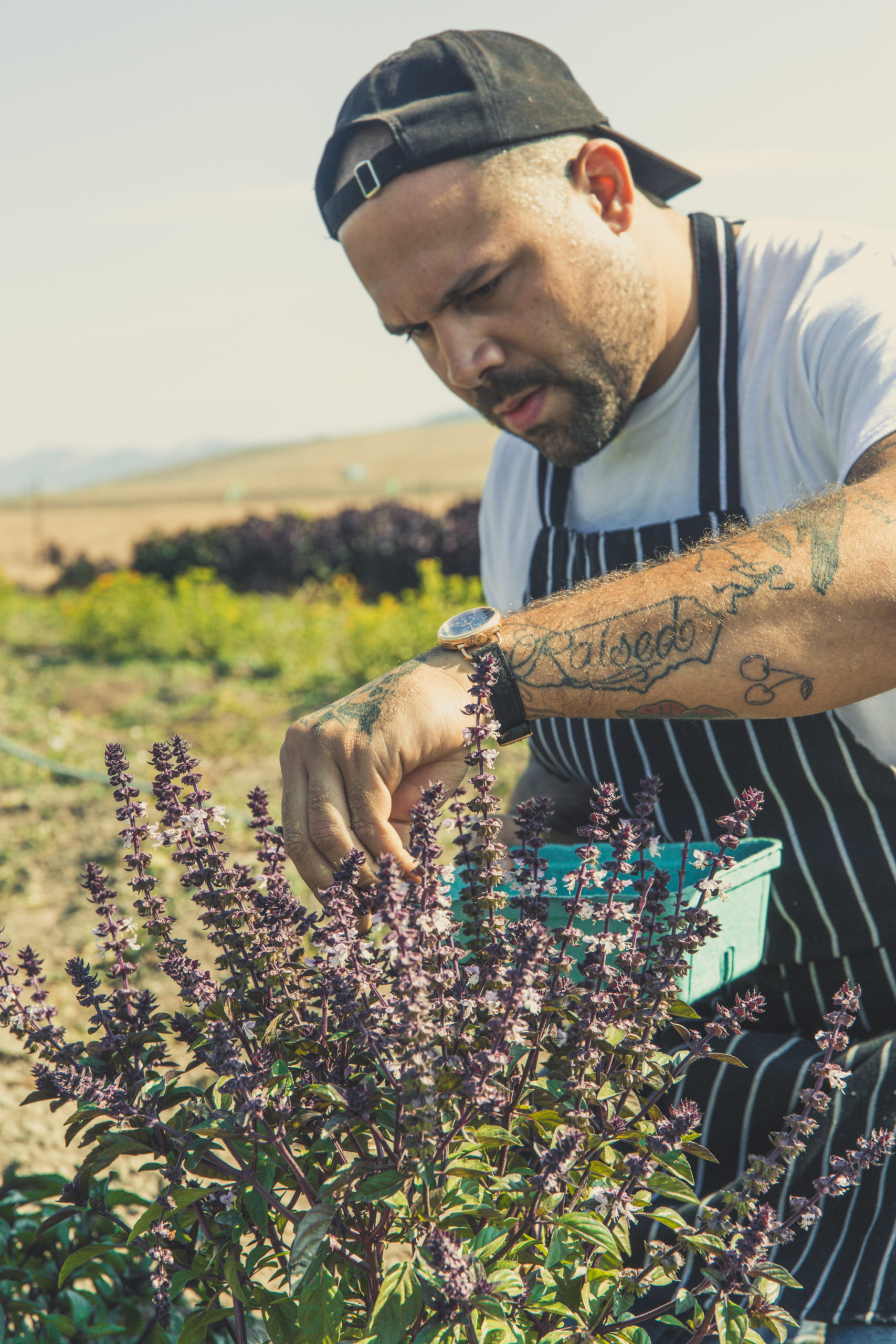 Portrait of Luke Reyes by Josh Semolik.
Portrait of Luke Reyes by Josh Semolik.
The film is called Screen Grab, and it can only be viewed through the portal of the paintings. Opening up the Artivive App and hovering over one of these pieces with an iPad, on the screen, the painting turns into a video. There are four paintings in the series and a clip of the film is encrypted into each one.
All of the paintings appear innocuous on the surface but each harbors a chapter of this darker tale. The film is about the way this kind of technology could be used in the future, because essentially with Augmented Reality, advertising can be placed anywhere. It doesn’t have to be on a billboard or the side of a bus. With AR, the ad space becomes any static location you can imagine. It’s scary to think about.
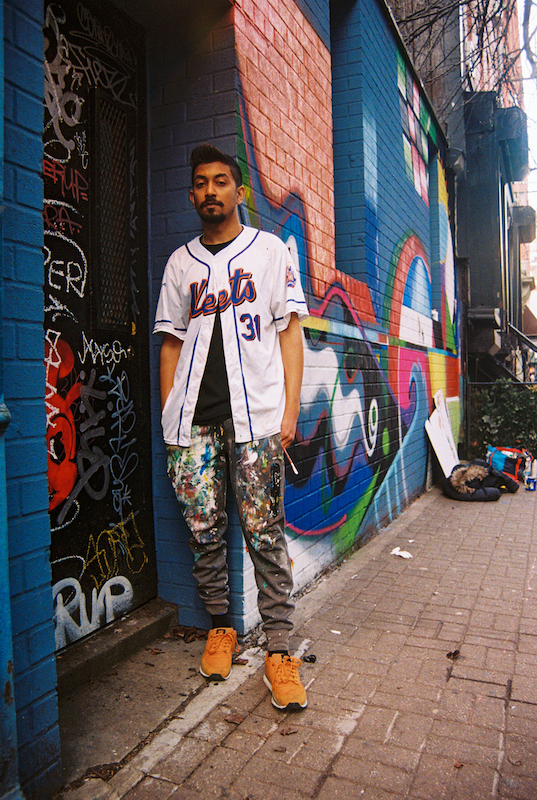 Photo by Jacob Consenstein, courtesy of the artist and ABXY.
Photo by Jacob Consenstein, courtesy of the artist and ABXY.
The paintings in the show reflect the fact that we are already bombarded by so many ads and so much disastrous news just through our devices, the film imagines what life could feel like if the media had access to our entire landscape.
WW: Can you tell us about how your process for this series of work, related to the mural on La Escuela Hispanica?
ZW: The works in this show incorporate so many different styles and materials, each requiring a different application method, or brush, or drying time. Each style brings its own history, advantages and disadvantages to the work, whether it’s calligraphy, graffiti, abstract art, impressionism, hyper-realism or anything else. For me, both the thrill and the challenge lies in conceiving of how they can all work together to create something almost utopian—a vision of what we could achieve together by discarding antiquated classifications and instead harnessing the power of our variant perspectives to create something bigger and more beautiful than any single element involved.
While each piece in the show focuses on a particular set of contemporary events or issues, the works in this exhibition reveal climate change as the culprit behind much of the conflict around the world today. In this spirit, the mural I’m working on for La Escuela Hispanica conveys the conflicted relationship between environment and technology today. The work centers around my depiction of the evolution of man: from ape to iPhone toting human. With his back to mother nature, today’s man clings absentmindedly to his technological spawn, forgetting all too easily where he came from.
I feel that technology plays such an interesting role in our lives today. We’re in desperate need of technological innovation to save the planet. But at the same time, our devices contribute to so much of the problem. Bringing us news so dismal and so constant, technology can crush our sense of agency. This work conveys the idea that if each individual decides they aren’t enough to save the world, we’ll never harness the collective power we need to do it. Rather than allowing technology to isolate us from another, we could and should use it come together. We really do have the whole world in our hands at this point. That’s what the show is about, and I really wanted to drive that point home with this mural.
WW: How do you approach public work, if at all, differently from a gallery project?
ZW: With public spaces, I really seek to express the particular rhythm and flow of a particular block in my abstractions. I made my way to painting through dance, and specifically breakdancing, so I started my career as an artist in graffiti. Until “Reality Show,” I had only ever worked with spray paint. But in order to achieve the hyperrealism I felt was so important to incorporate in these works, I had to pick up a paint brush for the first time. And now I’m hooked! So, I’ve actually brought brushwork out of the gallery and into the mural at La Escuela Hispanica—which is not typical for an outdoor mural like this.
Over the next couple of weeks, I’ll be adding AR components to this mural as well. So, stay tuned for that!






